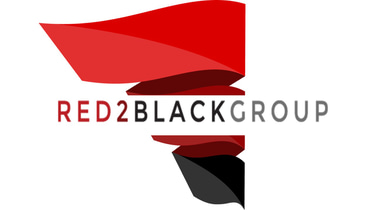Do Not Start Sales Planning In Sales
The Common Mistake: Every year, businesses gather for annual planning and instinctively turn to their sales team first for a revenue forecast. Everything needs to be aligned before you get numbers.
LEADERSHIP & MANAGEMENT
Patrick Mersinger
11/17/20213 min read


Every year, leadership teams gather for annual planning and instinctively turn to their sales team first for a revenue forecast. The process typically unfolds like this:
1️⃣ Sales teams retreat into number-crunching mode, analyzing past performance, market conditions, and pipeline health.
2️⃣ They return with an estimate—a number that factors in real-world obstacles like market saturation, product limitations, and customer churn.
3️⃣ The executive team pushes back, arguing that the team is "sandbagging" their projections.
4️⃣ A back-and-forth negotiation begins, and leadership sets a higher, arbitrary target that often disregards market realities or internal challenges.
This cycle repeats every year. But here’s the fundamental problem:
💡 Your sales team is not your product. If your product, service, or processes haven’t improved, how can you expect sales to magically produce more revenue?
A Hard Lesson From the Newspaper Industry 📰
Early in my career, I worked in the newspaper industry during a time of massive disruption.
📉 Craigslist had decimated classified ad revenue.
📉 Traditional print advertising was shifting online.
📉 A slowing economy made things even worse.
At one of our annual planning sessions in Chicago, the company’s owner brought in Richard, a retired CEO known for sustained growth through booms and recessions.
Richard opened the meeting with a simple but powerful statement:
💡 "If a business does the same thing year-over-year without improvement, it will naturally decline by 15%."
📌 Put another way: If nothing changes, your sales team must sell 15% more just to break even.
This was not just theory—it was a reality check. Markets evolve. Consumer behavior shifts. Competitors innovate. A business that fails to adapt is already falling behind.
Why This Matters for Sales Forecasting
Richard led a discussion on how every department—not just sales—contributes to revenue growth. He challenged the assumption that revenue planning should start with sales teams. Instead, he argued that sales should be the last step in the process, not the first.
That conversation completely changed how I—and many of my colleagues—viewed annual planning.
Where Sales Planning Should Start
Instead of handing sales teams last year’s number plus X% growth and hoping for the best, leadership should take a different approach.
Step 1: Establish a Clear Vision for the Year 🔭
Before asking sales for a forecast, the executive team must define the company’s vision and priorities.
📌 Key questions to ask:
✅ What are our biggest opportunities for growth?
✅ What market trends or shifts do we need to anticipate?
✅ What challenges from last year need to be addressed?
A clear vision guides every department’s strategy—not just sales.
Step 2: Engage Key Departments First 🏗️
Revenue growth isn’t just a sales responsibility—it’s a company-wide effort.
Each department should present its initiatives, investments, and improvements for the upcoming year.
🚀 Marketing: What new strategies or campaigns will drive brand awareness and lead generation?
🚀 Product Development: What enhancements or innovations will make our product/service more competitive?
🚀 IT & Operations: How will systems, automation, or process improvements remove friction for customers and sales teams?
🔹 Example: If marketing is launching an account-based marketing (ABM) strategy, how will that impact sales outreach and conversion rates?
🔹 Example: If operations are improving customer onboarding, how will that affect churn and long-term revenue?
These aren’t sales-driven initiatives—but they directly impact revenue potential.
Step 3: THEN Bring in Sales for Forecasting 🎯
Once the executive team has provided clarity and department heads have outlined how they’re driving growth, then sales teams can begin forecasting.
📌 Sales should evaluate:
1️⃣ How product or service improvements will impact current accounts.
2️⃣ Which market segments or territories have the greatest growth potential.
3️⃣ When these changes will produce measurable revenue impact.
This approach gives sales real, tangible factors to build their forecast around—instead of relying on arbitrary growth expectations.
Why This Approach Works
🚨 The Traditional Way: Sales in a Vacuum
❌ Sales forecasts are built without understanding how the company is evolving.
❌ Leadership challenges sales estimates, leading to tension and unrealistic targets.
❌ Sales teams are pressured to hit numbers they have no control over.
✅ The Smarter Way: Sales as the Final Step
✔️ Sales teams have visibility into company-wide improvements that impact revenue.
✔️ Leadership aligns growth expectations with actual business strategy.
✔️ The entire organization is held accountable for revenue growth—not just sales.
Sales Growth is an Organization-Wide Responsibility 💡
Relying only on your sales team to drive revenue leads to short-term, unsustainable gains. If the entire organization isn’t committed to growth, sales will always fight an uphill battle.
📢 Marketing legend Philip Kotler said it best:
💬 "The sales department is not the entire company, but the entire company should be the sales department."
A winning sales strategy isn’t just about pushing for higher numbers—it’s about ensuring the entire organization is aligned, accountable, and positioned for real, sustainable growth.
👉 Bottom line: Sales success starts before a rep makes a single call. The entire company must contribute to revenue growth—from marketing and product to operations and IT. Start there, and you’ll see real, measurable results.
Final Thoughts
🔹 Want stronger revenue growth? Stop treating sales as the starting point.
🔹 Start planning with vision, product, marketing, and operations.
🔹 THEN let sales build a forecast based on reality—not wishful thinking.
Let’s stop putting all the pressure on sales and start building businesses that drive sustainable revenue growth. 🚀
Sales Consultancy
Building Long Term Revenue
Connect now:
© 2025. All rights reserved.
Try our Free Elevator Pitch Tool:
